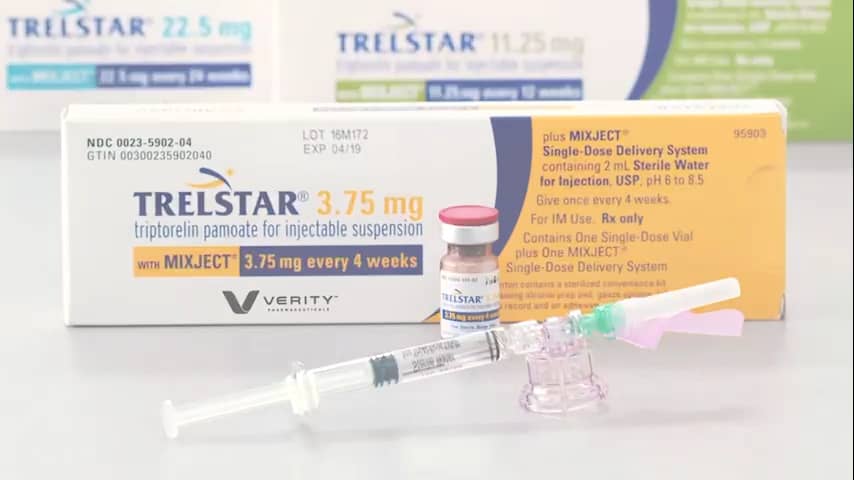Knight Therapeutics is a buy, Stifel says

Knight Therapeutics (Knight Therapeutics Stock Quote, Chart, News, Analysts, Financials TSXV:GUD) is continuing to build momentum, according to Stifel Nicolaus Canada analyst Justin Keywood, who maintained his “Buy” rating and $7.45 target price following the company’s first-quarter earnings release on May 8.
Keywood said Knight is steadily assembling a diversified global portfolio of pharmaceutical assets across key therapeutic areas. He highlighted the company’s consistent performance and balance sheet strength as reasons to stay bullish.
“We see Knight as building a diversified, global portfolio of drug assets in key valuable therapeutic areas,” Keywood said. “Knight has had several consecutive years of record revenue, including at Paladin Labs prior, and that streak becomes much more interesting at greater levels of scale. The company has a solid balance sheet and risk reduction attributes, including good liquidity in GUD shares, and we rely on solid management to execute with its track record of success.”
Keywood revised his full-year 2025 revenue forecast slightly downward to $398.0-million from $398.5-million and maintained his 2026 estimate at $434.3-million. He also adjusted 2025 expected EBITDA to $51.0-million from $51.3-million, with 2026 projected EBITDA unchanged at $59.5-million.
Knight Therapeutics, a specialty pharmaceutical company, reported first-quarter results that were essentially in line with expectations as it moves toward completing its acquisition of Paladin Labs a deal Keywood called “very meaningful” and potentially transformational.
In the quarter, revenue rose 2% year-over-year to $88-million, slightly above the $87-million estimate. Adjusted EBITDA was $12-million, or a 13.6% margin, compared to the $11-million forecast. Adjusted EPS came in at $0.02, a penny ahead of expectations. While cash flow from operations was light at $3-million versus an expected $10-million, Keywood attributed the difference to normal fluctuations in working capital and said there’s no material concern about the full-year outlook.
“We see no meaningful risks to annual forecasts as indicated by management’s decision to maintain 2025 guidance,” he said.
Knight’s stock fell 6% on the release day, which Keywood chalked up to an “unexpected run-up” in the weeks leading into what he described as an otherwise uneventful quarter. Attention, he said, should be focused on the closing of the Paladin Labs acquisition, expected in mid-2025.
“Our focus remains on the Paladin acquisition,” Keywood added. “It will add roughly 20% to the top line, but more importantly, we see wide synergy potential and a platform to leverage new growth in Canada. The closing of Paladin and subsequent growth quarters should re-rate GUD shares.”
So why hasn’t the stock performed better so far? According to Keywood, Knight’s roughly $500-million acquisition of Grupo Biotoscana (GBT) in 2018–2019 left the company heavily exposed to the Latin American market, accounting for about 90% of its business today.
“Although Knight’s five-year sales and EBITDA have grown 50% and 128%, respectively, its heavy LATAM exposure has led to a persistently low valuation, with limited Canadian investor interest,” he said.
Still, the view on GBT remains positive: “GBT is a solid, diversified business with over 130 assets, and Knight has become an ethical partner of choice to big pharma in historically challenging markets.”
With the Paladin deal, however, Knight’s business mix is expected to shift back toward Canada. Keywood estimates Canadian sales will represent 25% of the pro forma business and could climb higher through new product launches and future acquisitions.
“We expect this shift in geographic mix to re-ignite investor interest and lead to better valuation,” he said.
Knight’s pro forma leverage is about 0.5x, and the company has $100–150-million in near-term capacity for additional M&A activity.
-30-

Rod Weatherbie
Writer
Rod Weatherbie is a journalist based in Prince Edward Island. Since 2004, he has written extensively about the Canadian property and casualty insurance landscape. He was also a founder and contributing editor for a Toronto-based arts website and a PEI-based food magazine. His fiction and poetry have been featured in The Fiddlehead, The Antigonish Review, and Juniper.

